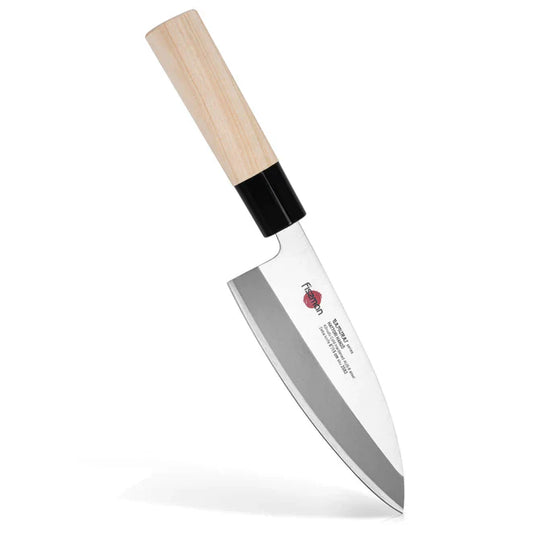Traditional Japanese kitchenware stands as a testament to the country's rich cultural heritage and its unwavering dedication to craftsmanship. From its meticulously forged knives to the elegantly designed serving dishes, these tools have not only shaped the Japanese culinary landscape but have captivated the hearts and minds of food and global kitchenware enthusiasts worldwide.
The Significance of Traditional Japanese Kitchenware
Japanese cuisine is renowned for its delicate flavors, precise techniques, and the reverence for the natural ingredients. At the heart of this culinary tradition lies the tools and utensils that have been honed and perfected over centuries. These kitchenware pieces are not merely functional; they are imbued with a sense of artistry, reflecting the Japanese philosophy of wabi-sabi – the appreciation of imperfection and the beauty in the natural world.
Essential Traditional Oriental Kitchenware
Knives (Hocho)
The Japanese knife, or Hocho, is a true masterpiece of craftsmanship. From the razor-sharp Santoku to the versatile Gyuto, each knife is designed with a specific purpose in mind, whether it's slicing sashimi, dicing vegetables, or mincing herbs. The attention to detail in the forging process, the selection of high-quality materials, and the meticulous sharpening techniques all contribute to the exceptional performance and longevity of these knives.
Cooking Vessels
The Japanese culinary tradition is also marked by the use of specialized cooking vessels, each with its own unique purpose and design. The Donabe, a traditional clay pot, is prized for its ability to evenly distribute heat, resulting in perfectly cooked rice, stews, and braises. The Suribachi, a mortar and pestle, is an indispensable tool for grinding spices, creating aromatic pastes, and preparing traditional sauces.
Serving Dishes and Utensils
Equally important in the Japanese culinary experience are the serving dishes and utensils. From the delicate Chawan (rice bowls) to the elegant Sakazuki (sake cups), these pieces are designed to enhance the visual and tactile aspects of the dining experience. Chopsticks, too, are an integral part of the Japanese table, with their distinct shapes and materials reflecting the attention to detail that permeates the culture.
Caring for and Maintaining Japanese Kitchenware
Proper care and maintenance are essential for preserving the longevity and performance of traditional Japanese kitchenware. This includes regular sharpening of knives, gentle hand-washing of delicate ceramics, and the proper storage of these precious tools. By taking the time to care for these items, home cooks and professional chefs alike can ensure that their Japanese kitchenware remains a cherished part of their culinary arsenal for years to come.
Incorporating Japanese Kitchenware in Modern Kitchens
As the world becomes increasingly interconnected, the allure of traditional Japanese kitchenware has only grown stronger. Home cooks and professional chefs alike are embracing these tools, not only for their exceptional functionality but also for the sense of cultural connection and appreciation they bring to the culinary experience. By incorporating these timeless pieces into their kitchens, individuals can elevate their cooking and dining experiences, while also honoring the rich heritage of Japanese culinary traditions.
Conclusion
The world of traditional Japanese kitchenware is a captivating realm that transcends the boundaries of mere utility. These tools, forged with meticulous care and imbued with a deep cultural significance, offer a unique opportunity to connect with the essence of Japanese cuisine. Whether you're a seasoned chef or a passionate home cook, exploring and incorporating these remarkable pieces into your culinary journey can truly elevate your culinary experience, allowing you to savor the flavors and traditions of Japan with every dish you prepare.

